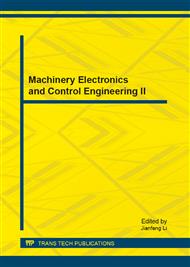p.1125
p.1130
p.1135
p.1139
p.1144
p.1148
p.1155
p.1159
p.1163
A Design Reuse Process in Reduction the Low Yield Rate for Display Panel
Abstract:
The low yield rate in display panel production that results from imperfect Indium Tin Oxide layer deposition is well known. In this experiment a 6th Generation TFT-LCD is used to investigate an ultra-precise method for the removal of Indium Tin Oxide (ITO) thin film microstructure from defective display panels. The complete removal of the ITO layer makes it possible to put these panels back into the production line for reuse with a considerable reduction of both waste and production cost. This process, which involves the removal of ITO layer substructure by means of an electro-chemical etching process, is of major interest to the optoelectronics semiconductor industry. The ITO film can be removed completely by a proper combination of feed rate and electric power. In this electro machining process a high current flow and high feed rate of the display (color filter) achieves complete and efficient removal of the ITO layer. A large diameter cathode virtual rotation circle also corresponds to a higher removal rate. A small cathode end radius effectively improves dregs discharge and is an advantage when associated with a high workpiece feed rate. This precision reuse process for the recycling of defective display screen color filters is presented as an effective tool for use in the screen manufacturing process. The defective Indium Tin Oxide thin-film can be removed easily and cleanly in a short time.
Info:
Periodical:
Pages:
1144-1147
Citation:
Online since:
March 2013
Authors:
Keywords:
Price:
Сopyright:
© 2013 Trans Tech Publications Ltd. All Rights Reserved
Share:
Citation:


